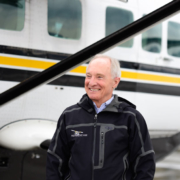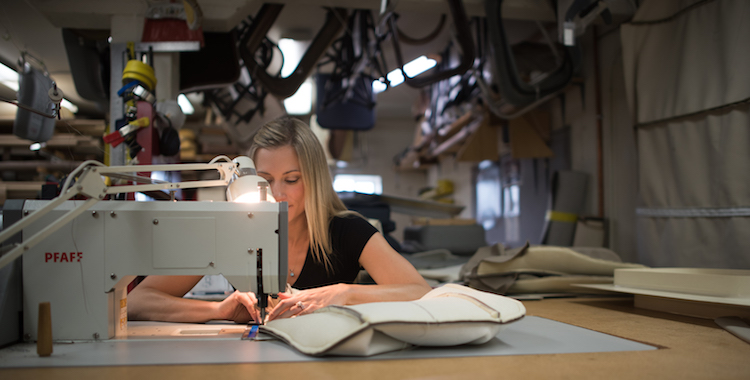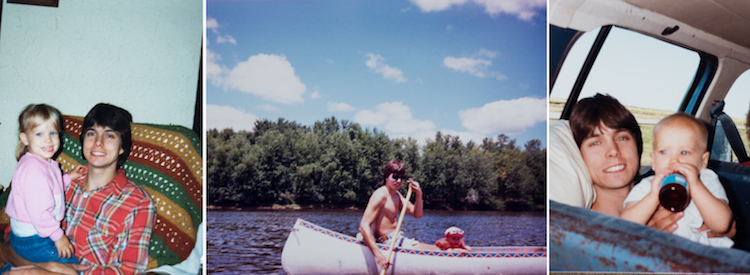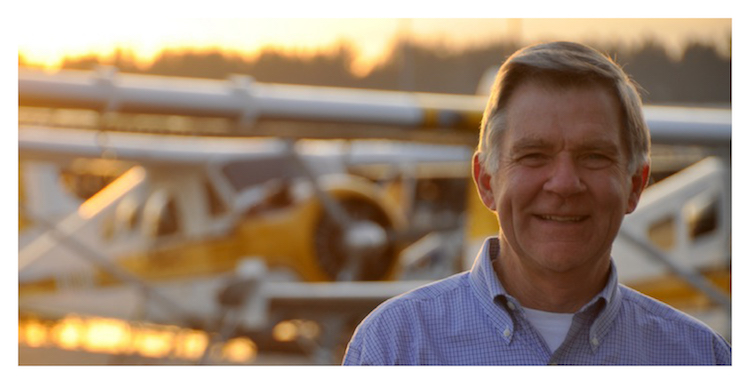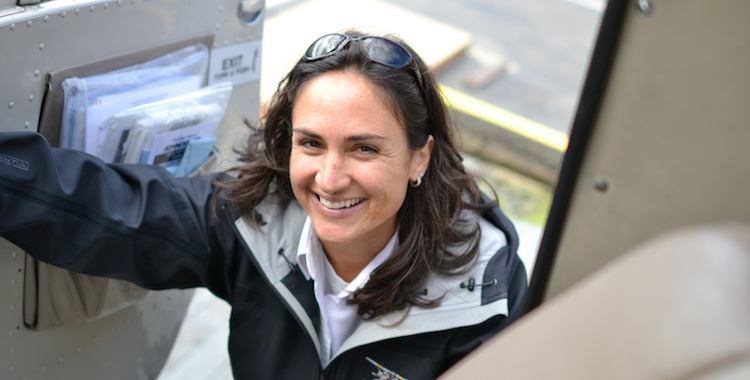It wasn’t the first seaplane Kenmore Air ever purchased. It wasn’t even the first de Havilland Beaver. But Six-Six-Zulu is definitely the best-loved member of Kenmore’s fleet.
A fixed wing single-engine beauty, she came off the line in 1953. Her early years were spent with the United States Air Force. She flew with six different units including the 6600th Air Department AMO (Air Material Overseas Unit). This was an especially appropriate beginning for a plane that would one day haul Navy torpedoes and land on remote glaciers. 
Torpedo Hauling
Purchased in 1967, Six-Six-Zulu arrived at Kenmore on wheels. In those days, this was common. Most Beavers were coming from Military and Air Force bases.
Stripping Six-Six-Zulu of her hardtop landing equipment, Kenmore installed floats and a little something special she’d need for her first assignment. Joining Kenmore’s original Beaver, Six-Four-Zulu, she began transporting Navy test torpedoes.
In the ’60s, the Navy was testing torpedoes at a firing range in Canada. Once fired, the torpedoes needed to be collected and transported to the Keyport Navy Base for analysis. Prior to Kenmore’s help, the torpedoes’ trek was typically a two-day affair – including nearly three hundred miles of road, two ferry rides, and a border crossing.
The Beaver’s task was seemingly simple. Retrieve and deliver quickly. The practicality of carrying the heavy and awkward torpedoes was a different story.
Bob Munro, one of Kenmore’s founders, saw a solution. He’d mounted dozens of rowboats and canoes aboard the float struts of various seaplanes. He didn’t see any reason not to do the same with torpedoes.
In order to carry the torpedoes, she was equipped with a pair of racks designed by Munro; Bill Peters, Kenmore’s fabrication genius; and Navy personnel. A special crane designed to fit around the edge of the Beavers’ wings was used to heave the heavy and awkward shells. But the payoff was worth it. The Beavers cut the two-day transport to a couple of hours.
The Bond Between a Plane & Her Pilot
Six-Six-Zulu was much more than a test weapon transport. She formed a special bond with Munro. While she’d take a spin with other pilots from time to time, her almost exclusive relationship with Munro was well known among the Kenmore staff. If Munro was scheduled for a Beaver flight, he and Six-Six-Zulu would be spending the day together.
As C. Marin Faure writes in Success on the Step:
[Munro] knew every one of [Six-Six-Zulu’s] quirks and how it would handle in virtually any situation. The engine and flight instruments in the panel simply confirmed what he felt through the seat, saw out the windshield, and heard in the rush of air past the fuselage and in the thunder of the engine (341).
It was a relationship that served them both well.
Glacier Landings
Just a year after flexing her carrying capabilities, Munro asked Six-Six-Zulu to test her durability and dexterity.
Research scientist Mark Meier was studying South Cascade, a small glacier just 75-miles northeast of Seattle. At the time, South Cascade was just two miles long and half a mile wide. Compared to the other cliff-hanging monstrosities nearby, it was a pussycat. Its mild slopes provided a relatively easy to traverse terrain. It was getting there that posed some problems.
The small glacier was surrounded by rows of razorback ridges. The eastern wall of its narrow, north-south valley was dominated by Mt. LeConte and Sentinel Peak. South of the glacier, a pyramid of rock towers, known as The Lizard, topped out at 7,339 feet. At the glacier’s foot, a lake bent around the base of a ridge, escaping down a tiny stream.
The hike in was treacherous, especially for scientists lugging heavy and awkward cases of delicate instruments. Supporting the project by air was a logical choice. It was logical, except for the fact that the carrying capabilities of a helicopter were limited and arriving by seaplane was considered downright crazy.
Meier called every seaplane owner in Seattle to see if they’d make the trip. By the time he called Kenmore, he was used to hearing, “No.”
It took a lot of careful planning and an immense amount of skill, but Munro and Six-Six-Zulu made it to the glacier. During the first flights, they landed on the lake at the base of the glacier. But when the lake froze over, Munro was not deterred.
“I’ll come in over the lake and then head right up the glacier. I’ll touch down where the surface is pretty level,” Munro reasoned.
And that’s just what he did. Munro flew Six-Six-Zulu onto the snow-covered ice, delivering vital supplies and picking up the collected samples.
The Kenmore Restoration
At 60-plus, many a working stiff would at least be talking about retirement. Six-Six-Zulu is still an active member of Kenmore’s fleet. And, she will be for years to come. That’s the beauty of de Havilland Beavers and the Kenmore restoration program.
While the last Beaver came off the line in 1967, like-new Beavers are coming out of the Kenmore Air maintenance shop on a regular basis.
Kenmore’s world-renowned maintenance crew has earned an impeccable reputation among aviation enthusiasts. Their overhauled Beavers are often referred to as “Kenmore Beavers.”
The nickname is duly earned. The hundreds of modifications developed by Kenmore over the years have not only improved performance and customer satisfaction, but helped equip the planes to handle changing technologies.
Six-Six-Zulu alone has undergone 55 separate modifications. More than once she’s gone into the machine shop for a complete overhaul and restored. Tearing a plane like Six-Six-Zulu apart and putting her back together like new is no small undertaking.
During her 1999 restoration, nearly 7,700 new parts were installed. The process took almost 1,963 hours. If it had been a one-man job, it would have taken a mechanic practically a full year to complete.
She is old to be sure. But she’s in great shape and Kenmore’s going to make sure she stays that way.
Facts & Figures
Tail Number: N9766Z
Manufacture’s Serial Number: 504
L-20 Serial Number: 1283
U.S. Military Registration Number: 52-6121
Gross Weight: 5,600 pounds
(Fully fueled + max carrying capacity)
Useful Load: 2,016.7 pounds
(Available weight for fuel, passengers & baggage)
Tank: 828 Pounds


